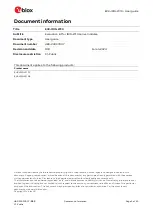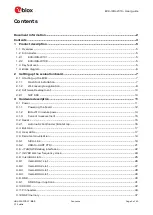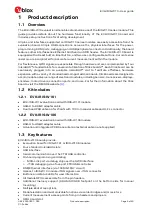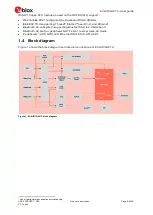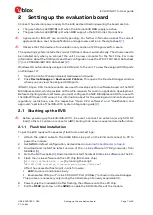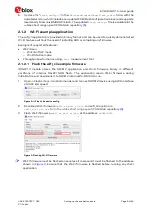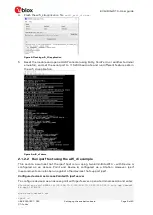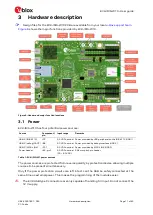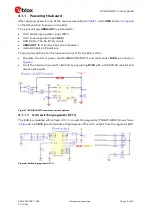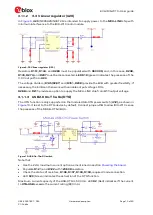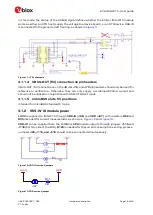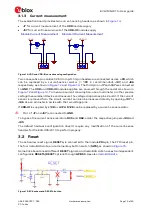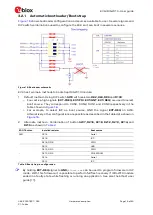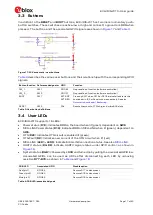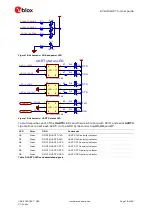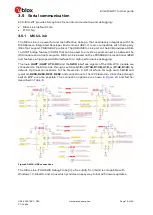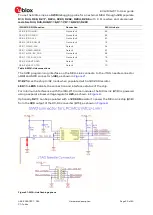
EVK-IRIS-W10 - User guide
UBX-23007837 - R03
Product description
Page 5 of 43
C1-Public
1
Product description
1.1
Overview
The EVK-IRIS-W10 evaluation kit enables stand-alone use of the IRIS-W10 series module. This
guide provides details about the hardware functionality of the EVK-IRIS-W10 board and
includes setup instructions for starting development.
All pins and interfaces supported on IRIS-W10 series modules are easily accessible from the
evaluation board. Simple USB connections serve as the physical interfaces for the power,
programming COM ports, debugging, and USB peripheral connectors. Additionally, the board
features other interfaces like Ethernet RJ45 and an SDIO header. The EVK-IRIS-W10 board is
equipped with a Reset button, Boot button, and two user-configurable buttons. Current sense
resistors are incorporated for accurate current measurement within the module.
For flexible use, GPIO signals are accessible through headers and are complemented by four
mikroBUS™ standard slots for convenient utilization of Click boards™. Each Click board can be
seamlessly plugged into an available mikroBUS™ slot to facilitate effortless hardware
expansion with a variety of standardized compact add-on boards. Click boards are designed to
accommodate a diverse range of electronic modules, including sensors, transceivers, displays,
encoders, motor drivers, connection ports, and more. For further information about the Click
boards, visit the MIKROE website
1.2
Kit includes
1.2.1
EVK-IRIS-W101
•
EVK-IRIS-W1 evaluation board with IRIS-W101module
•
USB-A to USB-C adapter cable
•
Dual band PCB antenna for WLAN with 100 mm coaxial cable and U. FL connector
1.2.2
EVK-IRIS-W106
•
EVK-IRIS-W1 evaluation board with IRIS-W106 module
•
USB-A to USB-C adapter cable
•
A dual-band integrated PCB trace antenna (external antenna not supplied)
1.3
Key features
EVK-IRIS-W10 boards provide:
•
Evaluation board for IRIS-W101 or IRIS-W106 modules
•
Four standard mikroBUS slots
•
USB interface
•
Serial communication over the FTDI USB controller
•
On-board programming and debug
o
MCU-Link port via debug chip over the SWD interface
o
JTAG debugging via a four-port FTDI USB controller
•
RMII/Ethernet interface (via 100 Mbit PHY circuit)
•
Access to IRIS-W10 module JTAG signals over JTAG connector
•
Buttons and status LEDs for user interaction
•
All module GPIOs accessible from the pin headers
•
Additional memory support (SRAM SOIC-08 footprint on the bottom side for manual
mounting)
•
Multiple Boot strap options
•
Module isolation and customizable functions via solder bridges and/or resistors
•
Current measurement access points from pin headers and jumpers
•
SDIO 3 card slot


